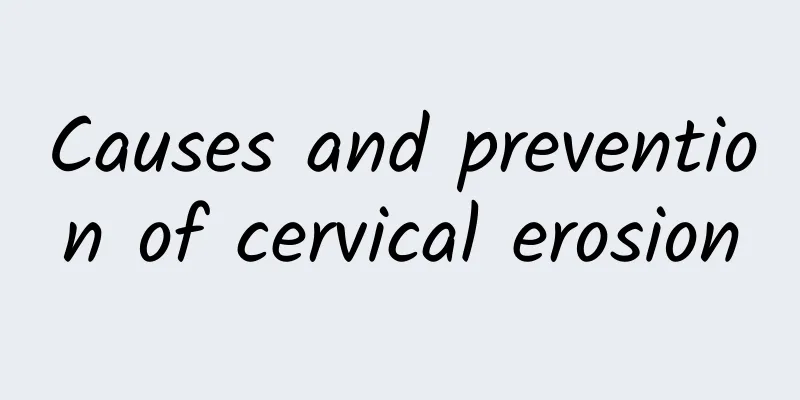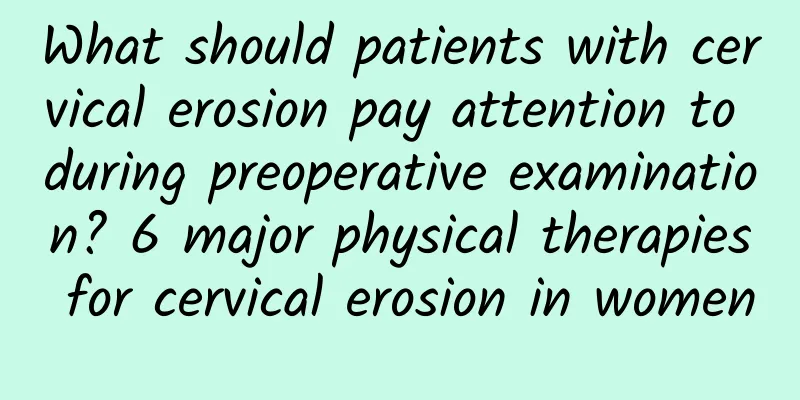Causes and prevention of cervical erosion

|
The main causes of cervical erosion include chronic inflammatory stimulation, fluctuations in hormone levels, improper sexual life, excessive cleaning or infection. Its prevention requires focusing on a healthy lifestyle and regular gynecological examinations. Chronic cervicitis is the most common cause of cervical erosion. Long-term inflammation can cause damage to the cervical mucosa. In addition, physiological factors such as increased hormones during pregnancy may induce erosion; early, frequent or unhygienic sexual intercourse leading to damage to the sensitive area of the cervix is also one of the causes. Some women also cause erosion due to the abuse of vaginal washes, which destroys the normal environment of the cervix. Pathological factors such as multiple births, incomplete cervical recovery after miscarriage, or exposure to high-risk viruses (such as HPV infection) may also cause cervical erosion. The actual manifestations are increased leucorrhea, lumbar pain, etc., and in severe cases, accompanied by contact bleeding or abnormal menstruation. Chronic cervicitis is the most common cause of cervical erosion. Long-term inflammation can cause damage to the cervical mucosa. In addition, physiological factors such as increased hormones during pregnancy may induce erosion; early, frequent or unhygienic sexual intercourse leading to damage to the sensitive area of the cervix is also one of the causes. Some women also cause erosion due to the abuse of vaginal washes, which destroys the normal environment of the cervix. Pathological factors such as multiple births, incomplete cervical recovery after miscarriage, or exposure to high-risk viruses (such as HPV infection) may also cause cervical erosion. The actual manifestations are increased leucorrhea, lumbar pain, etc., and in severe cases, accompanied by contact bleeding or abnormal menstruation. Prevention of cervical erosion needs to start from daily life. Maintain good personal hygiene habits and avoid abusing cleaning products; have regular gynecological examinations, especially women who have sex can have a cervical smear test or HPV screening every year, which can effectively prevent the development of the disease. Appropriately moderate sex life and pay attention to safety measures such as using condoms to reduce the risk of infection. Diet is also helpful. Eating more fruits and vegetables rich in vitamin A and vitamin C can promote the repair of cervical mucosa. People who engage in manual labor or sit for a long time should avoid long-term squeezing of the abdomen to reduce uterine blood circulation disorders. Seek medical intervention in time when abnormal symptoms are found to prevent further deterioration of cervical erosion. |
<<: Is cervical hypertrophy a precancerous lesion of the cervix?
>>: How long does it take to get pregnant after laparoscopic surgery for ectopic pregnancy?
Recommend
Analysis of the hazards of acute cervicitis
Acute cervicitis is like a time bomb, which serio...
Want to lose weight successfully? Avoid these 5 foods as midnight snacks
If you want to lose weight, it is very important ...
Food and medicine for health and disease prevention: Chinese yam (Part 2)
Pork Ribs Soup with Yam Post-illness care + stoma...
How long does it take for bleeding to occur after menstruation stops in an ectopic pregnancy?
Ectopic pregnancy usually causes bleeding after 6...
How long does the menstrual period last for lochia to be discharged?
How long does the menstrual period last for lochi...
How to diagnose adnexitis
How can adnexitis be diagnosed? The diagnosis of ...
Will a left ovarian cyst go away on its own?
Will a left ovarian cyst go away on its own? Left...
How to check for irregular menstruation
In recent years, irregular menstruation has becom...
What are the commonly used drugs for endometrial tuberculosis?
What are the treatment methods and medications fo...
Precautions after endometrial thickening surgery
The normal endometrium will change periodically w...
Can cervical biopsy confirm the diagnosis of uterine fibroids?
Uterine fibroids are a very common uterine diseas...
Symptoms of uterine prolapse
The symptoms of uterine prolapse mainly include a...
What are the main hazards of uterine fibroids?
Many patients with uterine fibroids do not pay mu...
Kelp is rich in nutrients, not only does it contain iodine and calcium, "this ingredient" can actually help you lose weight!
Kelp is a food with high nutritional value. In ad...
What are the effective contraceptive methods?
Many women who undergo abortions have unplanned p...









